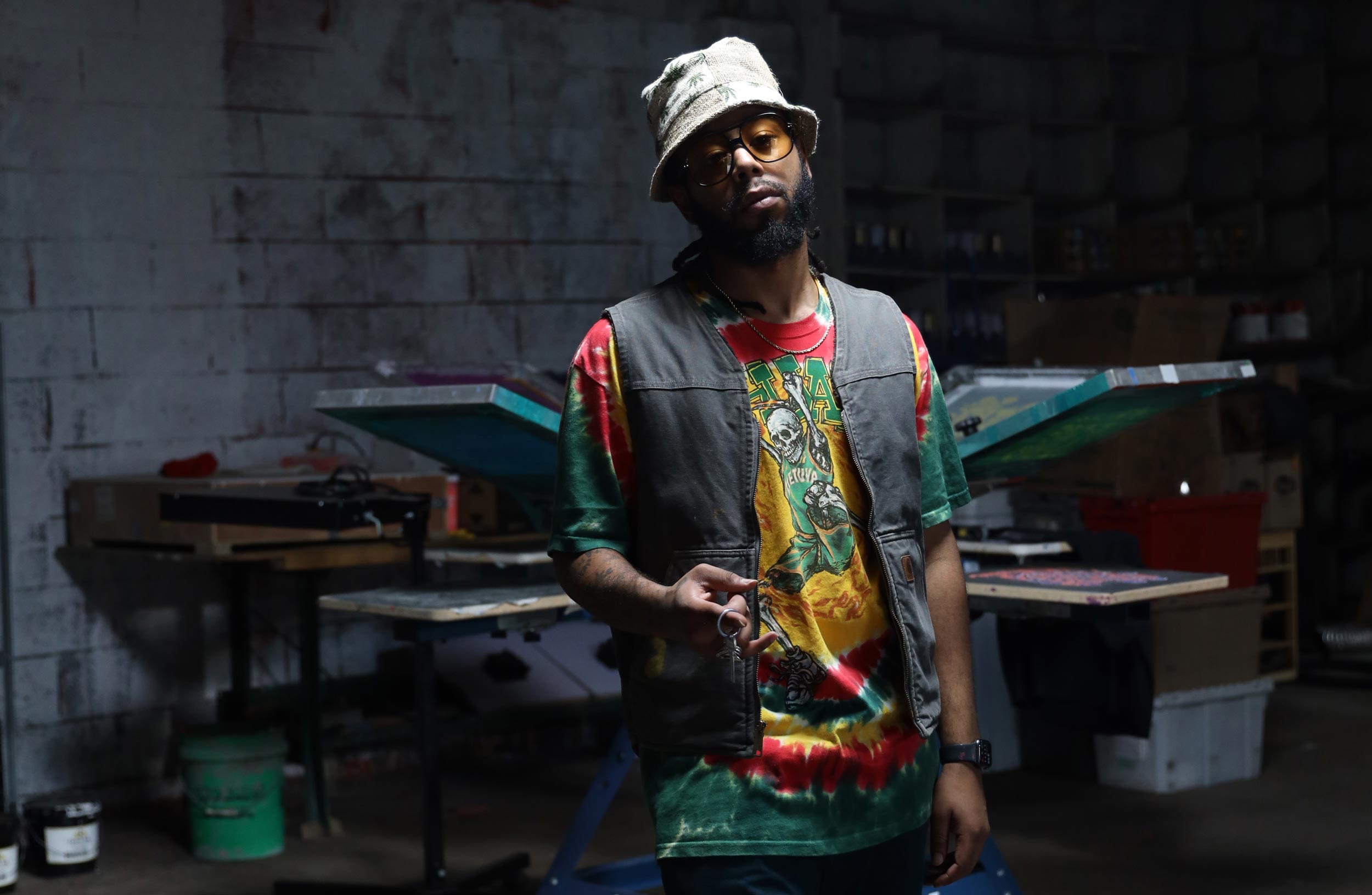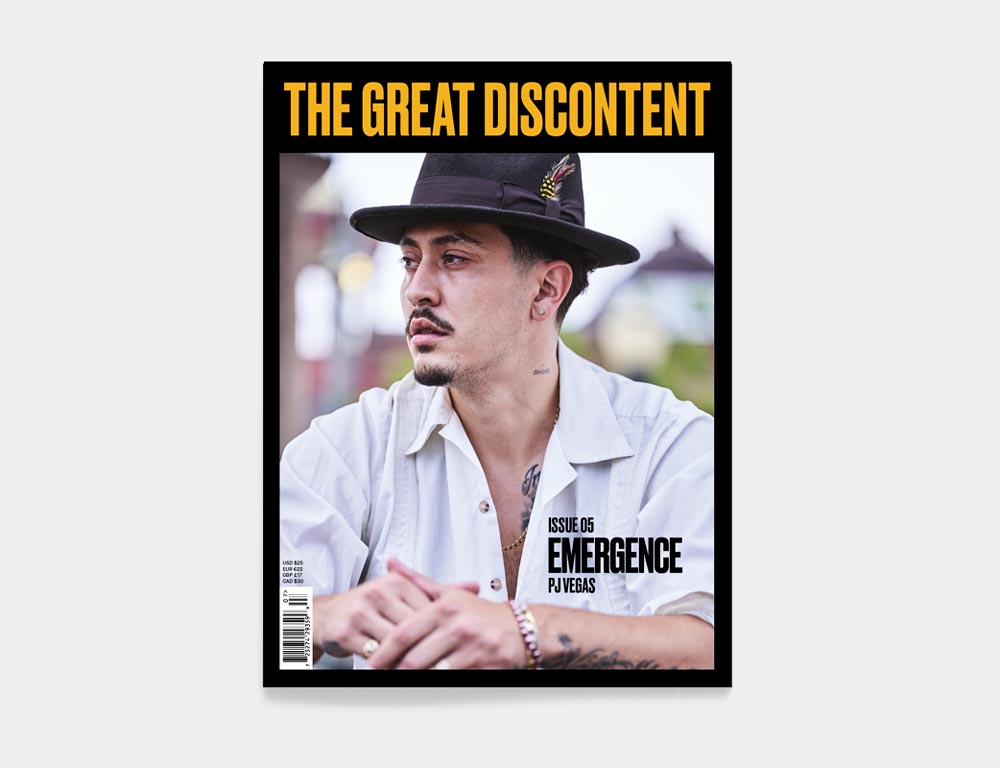
Emergence Issue: TGD's fifth issue features a dynamic group of 15 creators who are deeply committed to addressing systematic challenges in their communities through creativity and emerging ideologies. Buy Now
Let’s start at the beginning—back to the environment where you grew up. What did it look like, and why is it meaningful to you?
I grew up on the east side of Detroit, Michigan. Growing up in the city that was the epicenter for the automobile industry and at the same time was going through financial challenges and political challenges, I didn’t really become aware of the scope until I got older.
I had one of those art teachers who threw you into any program if she saw that you had potential. I got into an architecture program that taught me to understand structures, why they were built. We got to see the architecture in Chicago; it got me outside of my comfort zone. The older I got, the more I started understanding the policy of why the city started becoming blighted, why these properties started being mismanaged, and why there was a lot of speculation in the city, but not a lot of rehabilitation.
I’m always questioning things, opening my mind, making sure that if imagination played a role, that the function of the idea had purpose. I think it wasn’t until I moved to New York at 20 where it really set in. I spent seven years in New York, focused on my career, but Detroit always stayed in my heart. Moving to California was a complete 360 flip. I’d be like, “Damn, this place is really beautiful.” Again thinking like: “Well, damn. What about Detroit?”
Detroit is so spread out. When you think about community, is your mind focused on the east side and specific people, or are you thinking about Detroit as a whole?
Detroit as a whole is always on my mind and in my heart. I’ve always had the mentality that if I’m gonna leave, I’ll gather what I can and then bring it back: resources, knowledge, network, people, friends, whatever it may be. That way, I can have the same sense of pride in my city when other people come.
We were once that metropolitan center for America. I feel like it’s still here in our hustle mentality. We all find our ways to innovate and reshape our economy here in Detroit. As long as we’re doing the small community work, the bigger picture of the city comes together. It’s just about using our networks and more or less creating that environment that we want to live in.
What were the early moments when you started recognizing the creativity inside of you?
It started as early as kindergarten, but that self awareness and will to become an artist developed over time through the confidence building of my peers, family, and friends around me.
My earliest art-related memory has to be in preschool. We had a substitute teacher, and I didn’t take a nap. My alertness drew my attention to the teacher. I peeked over, and he had a sheet of paper and a pencil and was drawing a centaur. And I was like, “Wait, this is just coming out of your head and you’re putting it on paper, just like that?”
Everything after that was just doodling in class. My art teacher nurtured it. One of my friend’s parents suggested I go to Detroit School of the Arts. My mom liked the idea, signed me up. I was never like, “I know I want this.” I think it’s always been the people around me supporting whatever I exhibited. Encouraging me as an artist. Encouraging me to become more of an entrepreneur.
You speak about embodying these relatively distinct but connected creative identities: Tony the muralist and the fine arts specialist, Tony Whlgn®, the designer, and Tone, who sounds like he might be closest to your native self. Can you tell me how having these different identities serves you?
All these years, I was struggling to define: “What is my style? What is my voice? How can people identify me?”
Tony Whlgn® came when we formed our team, when it became more and more certain that this would be my life and I wouldn’t be working for anybody else. It was like, “I’m gonna slap these tattoos on my hand.” I learned to turn it into a business. Me being able to identify Tony as the businessperson who is focused on music, art direction, and design—he doesn’t need to overwhelm himself by working with three or four music artists a year and then also wanting to paint three or four murals a year. The more I’ve learned, the more I’ve been able to edit myself. As a designer, you’re constantly spinning plates.
That sense of self-care established who Tone was, because all these years I’ve been working as these business entities. I had lost sense of who I was as a person, as opposed to just running a business and pushing projects out and doing, doing, doing, doing, and not really ever making time to understand who Tone is, what Tone appreciates. Everything is constantly moving. When you stop to do something for yourself, the world doesn’t stop. So, it’s about time management, it is about regulating and planning. UVEELME?
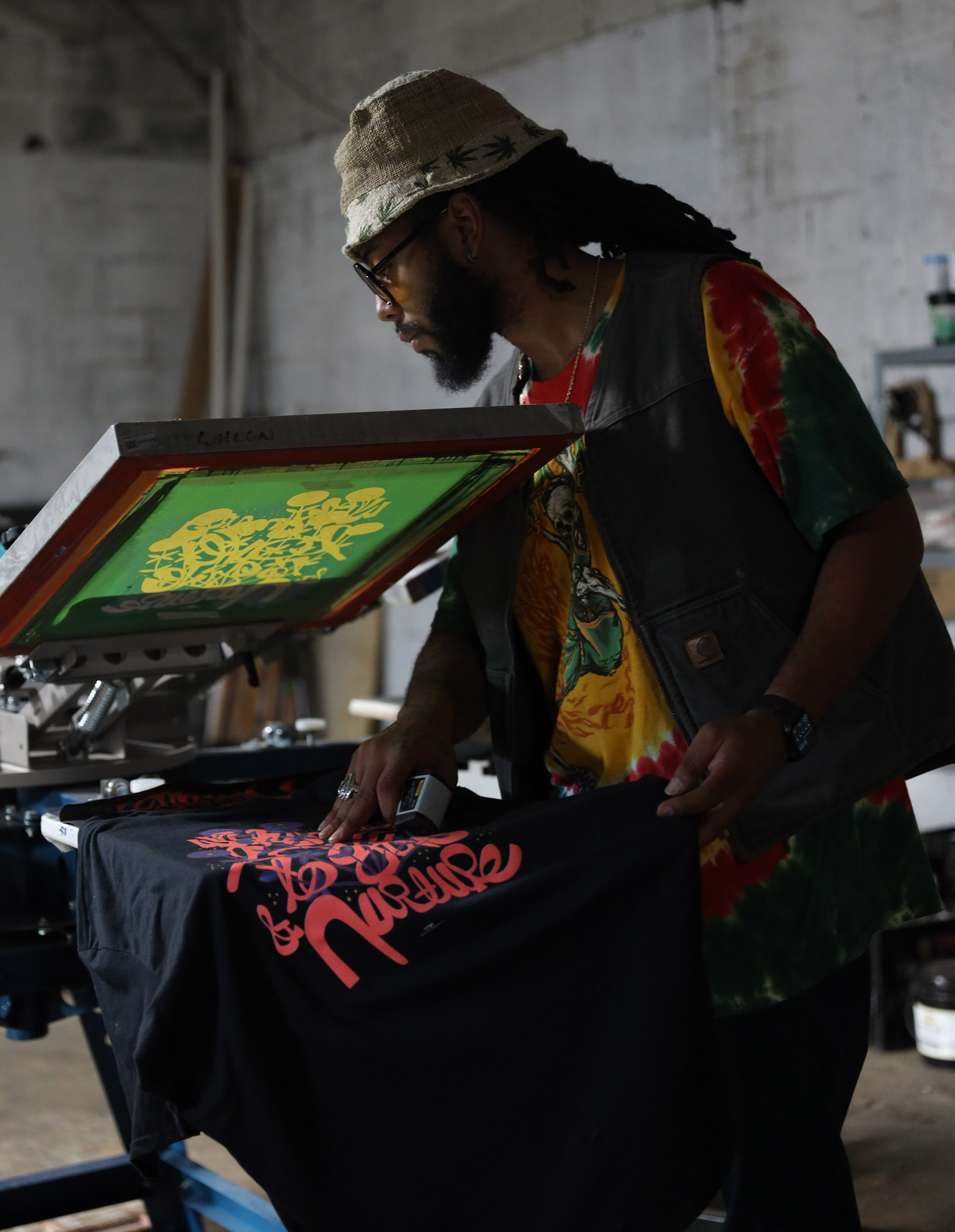
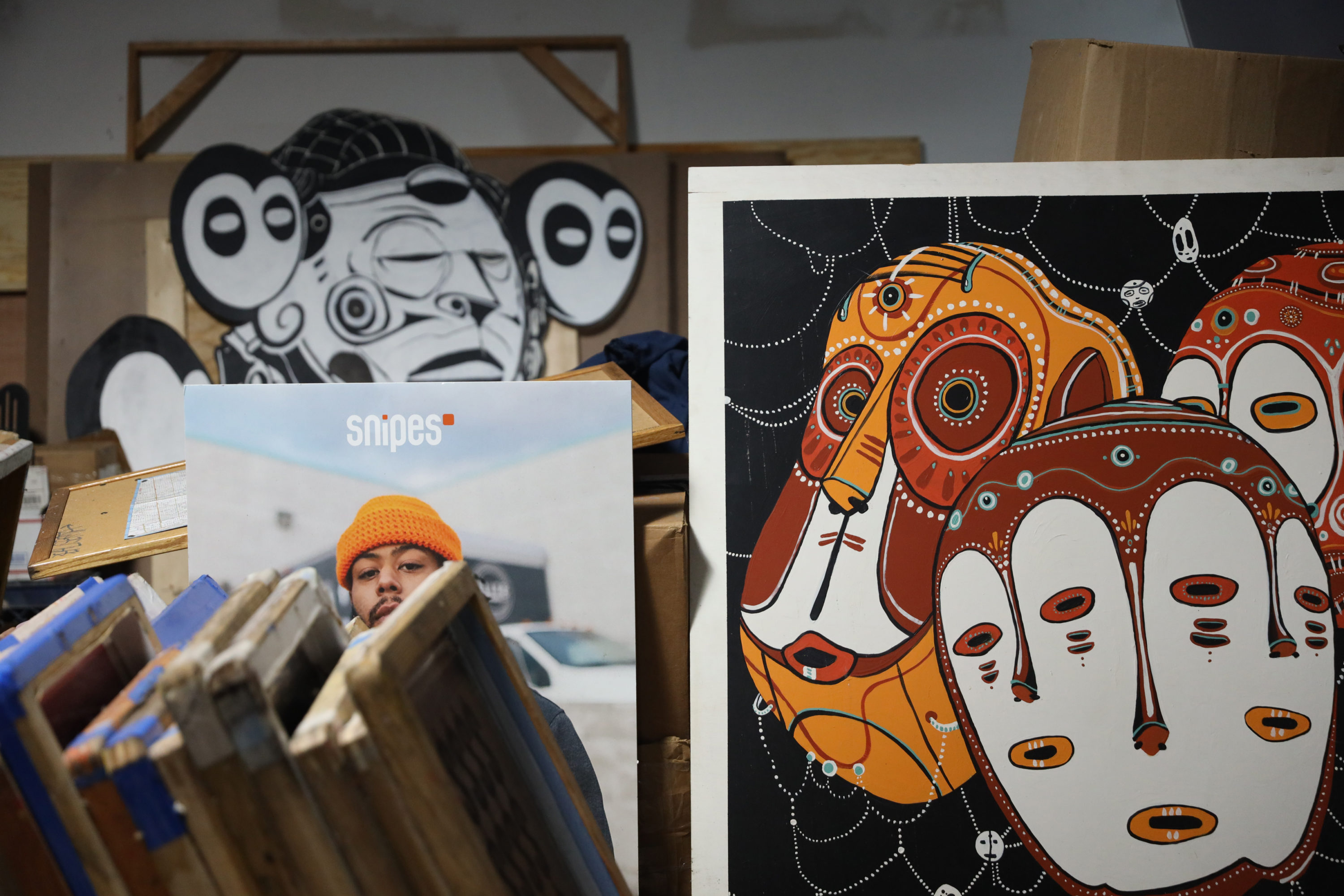
You’ve said that there is “a fine line between being a business and then being an individual human being and learning how to be vulnerable and express yourself with the outside world.” As artists, we’re often taught creativity is this sacred, spiritual force. When did you plug into that business instinct?
In high school. I used to go thrifting with my mom and my grandma and my auntie. I’ve always had an appreciation for rehabilitating things. I would get a digital watch, take the face off, use the inner components, cut a little face in the game controller with an exacto knife, hot glue it in there, and put some straps on it.
When I’d wear them to school, people would be like: “Oh, damn. Tone, can I get a watch?” And I’m like, “Yeah, I can make you one, but it’s gonna cost me this.”
At that point, I learned to make whatever I was doing back. That and doing photography, editing senior photos, I grabbed enough income to be able to work on my own side projects. The extra money allowed me to invest in myself, invest in my business, and invest in my craft.
What were the tensions that came along the way for you? Is there a difference when you’re creating for yourself versus someone else?
It starts off with people asking you to work in this word-is-bond way. And then you start getting corporate jobs and the corporate job asks you to sell all your rights or sign over this, or do you have an LLC or a business for this? Paying attention to the paperwork, the rights to everything, got me to think a lot. A lot of times artists have been abused or exploited and never in my life did I ever want to become a struggling artist not able to make ends meet.
What was happening with my artwork was that people would pay me little to go make a lot. It was really hitting me on the head when I was in the music industry because I would make a logo and get paid a little and then see that logo get placed on hats, cups, T-shirts, tour books, flyers, posters, stickers, this, that, and this. And I’m like, “Hey, hold up.”
I had a mentor in New York who was a designer that worked in the industry for 20-plus years. I went to ask him, “Why can’t I get royalties?” His reply was, “It’s looked at as marketing material.” And I was just like: “I’m not in the business of marketing. I’m an artist collaborating. It doesn’t make sense that the guitarist on the album gets XYZ in royalties and the artist that packaged how everything looks gets a onetime fee. It’s not adding up.”
It caused me to step away from New York, step away from the music industry, and essentially demand more respect. It allowed me to further my transitions back into my art. I used design to structure a career for my art—that way I won’t be a struggling artist.
I think the biggest challenges that I faced within my career had to come from not knowing my own worth. As much as I could blame the corporations, the businesses, whoever was paying me, it is always gonna come down to my own self-confidence, how I feel about my artwork, what I think my artwork deserves. That’s what reflects my career at the end of the day. If I’m just giving away everything for free, allowing people to use and abuse me, my life will look like that of a struggling artist.
Any medium that you’re working in is communicating a message, but it also has its own character, its own energy that can introduce new ways of thinking. You talked about not wanting to be known as one thing. How do you go back and forth?
It’s always knowing that you’re a student. I’m honestly never going into a project like, “I know that this is gonna be it.” A lot of things that I have done in my career, I’d honestly probably done for the first time. I’m challenged with the struggles of the first-timer. Each time. The simple mistakes, the trial and error. It isn’t done like this, it’s done like that. There’s always some type of self-confidence insecurity about releasing the final product. I think that allows me to use pressure to force a lot of things out of myself. When I was a kid, it was about procrastinating. Now, the pressure is turning out diamonds.
If I wasn’t open enough to learn new things or access different resources or mediums within art, I would never grow. It’s always been about learning oneself as an artist, to be able to understand how to interpret myself to the world. If you start drawing cats one day, people go like, “Oh, this is the guy who draws cats—can you draw me a cat?” Maybe I just like drawing cats for a month. But in this industry, people will want to only know you for one thing. This is never about being like, “Oh, I’m just a painter.” As an artist, I’m constantly defining myself. Don’t put me in a box just yet.
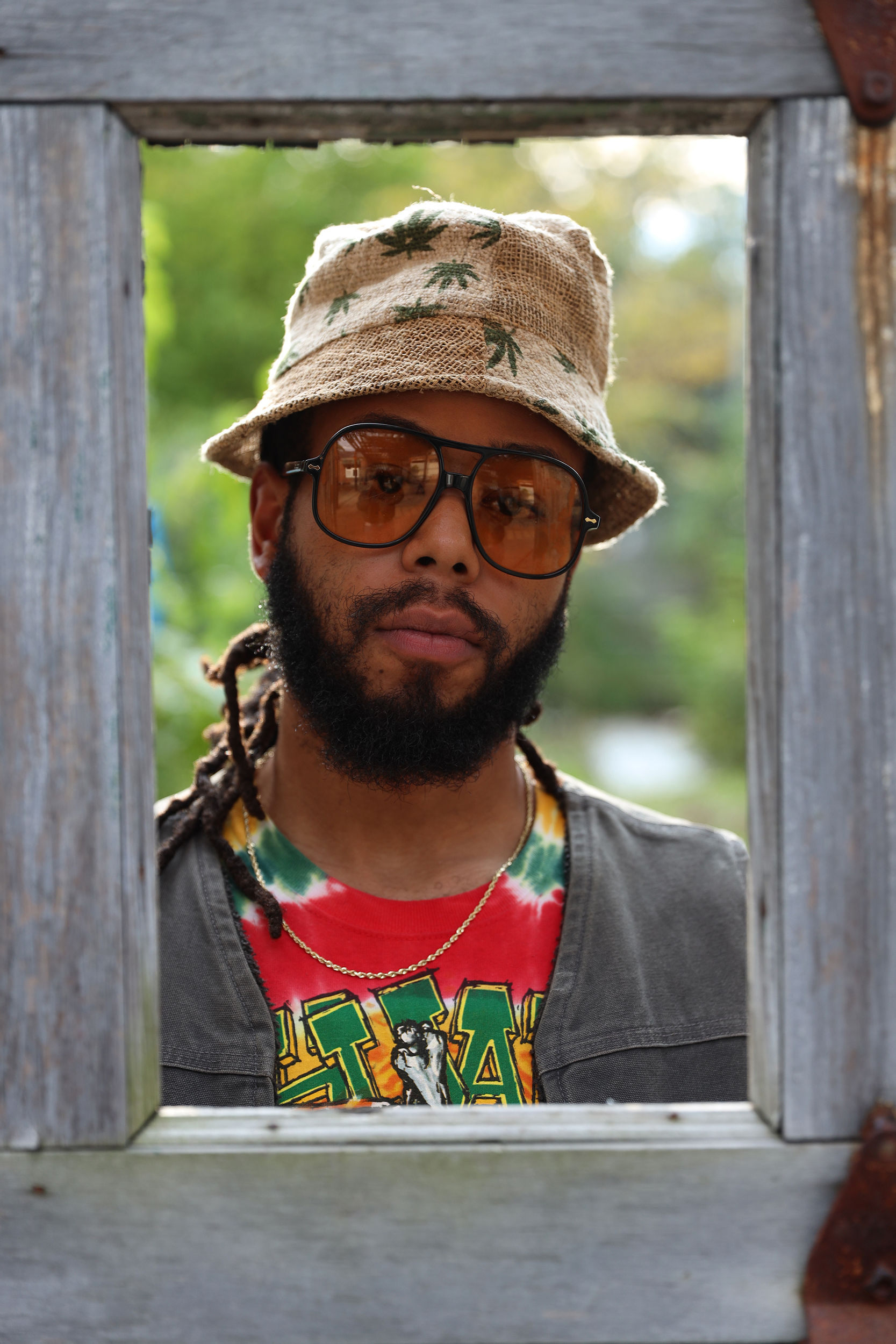
“If I wasn’t open enough to learn new things or access different resources or mediums within art, I would never grow. It’s always been about learning oneself as an artist, to be able to understand how to interpret myself to the world.”
What does your sense of community look like? When you talk about Whlgn®, the collective, what is it and how does it work?
The way that we have been working over the years is sharing resources, sharing networks, sharing business opportunities, also programming things together as a unit. Sometimes things don’t work with all of us on one project. Sometimes things work with three of us on the project and we attack it like that. Sometimes things work with one person on a project.
We program unorthodox events around the holiday Friday the 13th. Each one is unique based on the time frame. We’ve had a cabaret-style bonfire, we did a pop-up shop one year, we did a coat drive one year for the boys that we had met through our youth program, Leaders Amongst Leaders.
It doesn’t always have to be a party, but each time we’re creating some type of impact in our community. When we do these things, people are able to gauge what the art community looks like in Detroit. People are able to meet new creatives, establish new relationships.
And just because everyone’s not a Whlgn®, doesn’t mean that they aren’t doing Whlgn® things. Flexing the mold of what art looks like, what creative work looks like, what a community looks like, what a team looks like.
Just like myself as an artist, we’re not trying to put ourselves in a box. People wanna put things in boxes. Is Whlgn® an agency or are you guys a creative group? Or are you guys a gang? Shit. It don’t matter. You just wanna label something.
We’re still defining ourselves, but the way we work is similar to a think tank for political policies, but a think tank for culture, for arts, for community. It’s being able to not only nurture ourselves, our team, but also our community. We love doing what we love doing. That’s really what Whlgn® is about. Not even gonna front.
